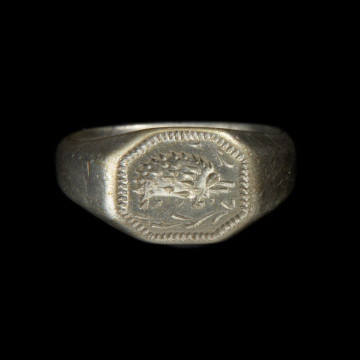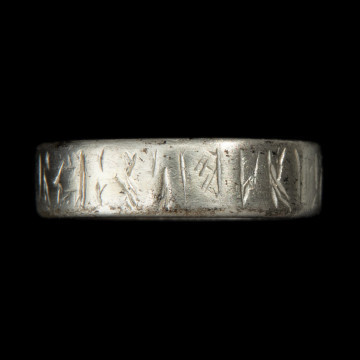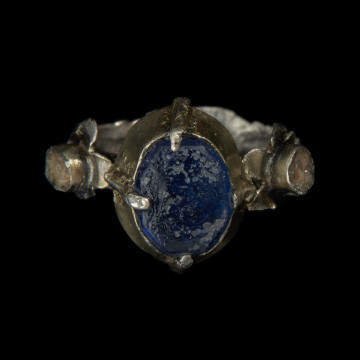
Signet ring with hedgehog
przełom XIV i XV wieku
National Museum in Szczecin
Part of the collection: Set of archaeological relics found in the Lublin Region
The golden ball pendant is an example of the high level of jewellery art of ancient craftsmen working in the first centuries AD in the area of Barbaricum.
The artefact was found in a cemetery of the Przeworsk culture in Opoka, on the Kurówka river, in the Końskowola commune, Puławy county. Archaeological research on the site was conducted in 1961-1962 by Zygmunt Ślusarski, an archaeologist from Lublin.
The ornament was placed as a gift in the mortuary grave of a woman. The grave was also equipped with, among others: earthenware vessels, including an ashtray in which burnt bones were placed, iron clasps (clothes pins) and a belt buckle.The tomb can be dated to the 2nd half of the 2nd century AD.
The pendant is in the form of a sphere ending in a triad made of granules. The technique of granulation, already known to ancient goldsmiths, involved soldering very small balls - granules - to the surface of objects, which created a fine ornament. The pendant was made of gold, which was rarely used for ornaments by communities of the Przeworsk culture, identified with the Vandals. It is likely that the ornament was imported from the area occupied by the Wielbark culture, i.e. the Goths.
Ball pendants are relatively rare finds in the territory of Central European Barbaricum. Also, the workmanship in precious metal makes the piece extremely valuable.
Author / creator
Dimensions
cały obiekt: height: 18 mm
Object type
jewelry
Technique
filigree
Material
gold
Creation / finding place
Owner
The National Museum in Lublin
Identification number
Location / status

przełom XIV i XV wieku
National Museum in Szczecin

przełom XIV i XV wieku
National Museum in Szczecin

National Museum in Szczecin
DISCOVER this TOPIC
National Museum in Szczecin
DISCOVER this PATH
Educational path